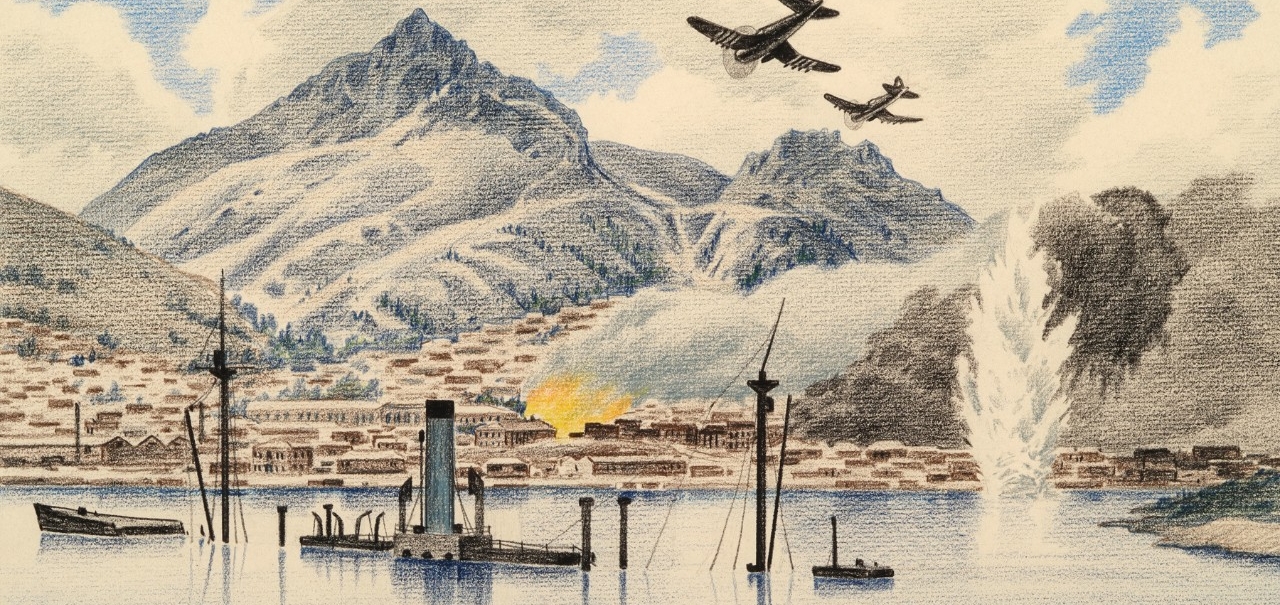
Remembering the Forgotten War: Korea
Conditions Leading to the Korean War
Following World War II, the Soviet Union and the United States divided control of the Korean peninsula, formerly a Japanese colony. From 1945 until an independent government could be established, the two countries agreed to a dual administration with the Soviets above the 38th parallel and the Americans below it. The arbitrary split created problems from the start, only made worse by the ideological differences of the controlling countries. Also, the Korean people despised it, occasionally resorting to violence to protest decisions in which they played no part.
The United Nations established a commission to oversee a national election that would allow an end to the partition, but the Soviets refused to allow it in the north. When the South elected the pro-western Syngman Rhee in May 1948, North Korean Communists countered by electing Kim Il-sung. The Soviet government approved the choice and began building up the North's military strength while proposing that all foreign military forces be withdrawn from the country by early 1948. They kept to their deadline, but the United States did not withdraw until a year later, leaving a weak South Korean army with only around 500 military advisors for support. Meanwhile, troops dug in on both sides of the 38th parallel and regularly traded shots. On June 25, 1950 the North Korean army crossed the 38th parallel in a full-scale invasion, destroying or pushing back any resistance in its path.
Invasion and Counterinvasion
In the first month of the war, North Koreans had pushed South Korean and American ground forces into a very small area on the Pusan peninsula of southeast Korea. In order to break out, General Douglas MacArthur, Commander in Chief of the United Nations Forces, conceived a plan to encircle the North Koreans by making an amphibious invasion at their rear. Inchon harbor was chosen as the landing site, partly because of its proximity to the capital at Seoul. The harbor city fell quickly on September 15, 1950, and from this foothold the Allied forces pushed the North Koreans back across the 38th parallel and up the peninsula within a matter of weeks.
Following the Inchon invasion, Allied forces chased the North Korean army to within a few miles of the Yalu River, the border with mainland China. Mao Tse Tung, fearing that an invasion of Manchuria would follow, joined the war on the North Korean side. Men and materiel began pouring across the Yalu River. The reinforcement allowed Communist forces to strike back, surprising the Allied army, which had committed the same error of overextending its resources in moving north that the North Koreans had in moving south.
U.S. Navy Operations in Korea
Throughout the Korean War, the United States Navy provided substantial assistance to land operations. Planes from carriers gave air support to combat operations and destroyed factories, power stations, supply trains, and other targets that interrupted supplies to the Communist army. Big guns on ships, such as the 16-inch guns on USS New Jersey, also fired on inland targets. Along the coast, minesweepers worked to keep harbors clear for Allied operations. Most importantly, Navy ships provided platforms for coastal operations, such as the invasion at Inchon and the evacuation of thousands of encircled troops from the city of Hungnam.
Battling to a Stalemate
In January 1951, the combined Chinese and North Korean forces pushed United Nations forces back below the 38th parallel, and for the next five months the war was one of offensive and counter-offensive, as the Chinese poured hundreds of thousands more men and tons of supplies and weapons into its attempt to destroy the Allied army. Finally, Mao Tse Tung admitted that his army would be unable to administer a final crushing blow.
The war became one of dogged endurance. Both sides entrenched, and for the next two years as peace negotiations began, broke off, and began again the war continued. The battle line wavered above and below the 38th parallel, but changed little between May 1951 and July 1953.
Armistice Talks
The armistice ending hostilities in Korea took more than two years to negotiate. The main issues centered around three topics: 1) the Communist demand that all foreign troops withdraw from the Korean peninsula, 2) the disagreement over the placement of the line dividing North and South Korea, and 3) the repatriation of prisoners of war. The third issue would prove the most difficult to solve. Both sides finally reached an agreement in July 1953. Because the supreme commanders did not wish to meet, the chief negotiators signed a preliminary document at the "Peace Tent" at Panmunjom, followed by a formal signing by each commander at his headquarters hours later.
The Prisoner Exchange
The most hotly contested issue at the armistice talks were the fate of prisoners of war, particularly North Koreans and Chinese who did not wish to return to their country of origin. In the end, both sides agreed that all prisoners would be funneled through a Neutral Nations Commission for Repatriation. Each would be interviewed and allowed to choose to go to North Korea, the People's Republic of China, South Korea, Taiwan, or a neutral country. The formality of the interview and exchange process prolonged the painful ordeal for many a prisoner. Repatriating Communist prisoners frequently staged demonstrations for the onlooking press, alleging inhumane treatment and harsh conditions in Allied prison camps.


